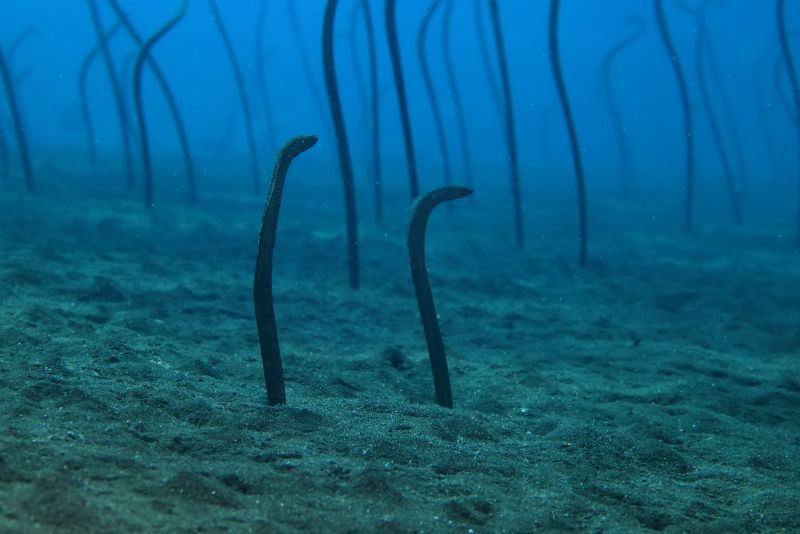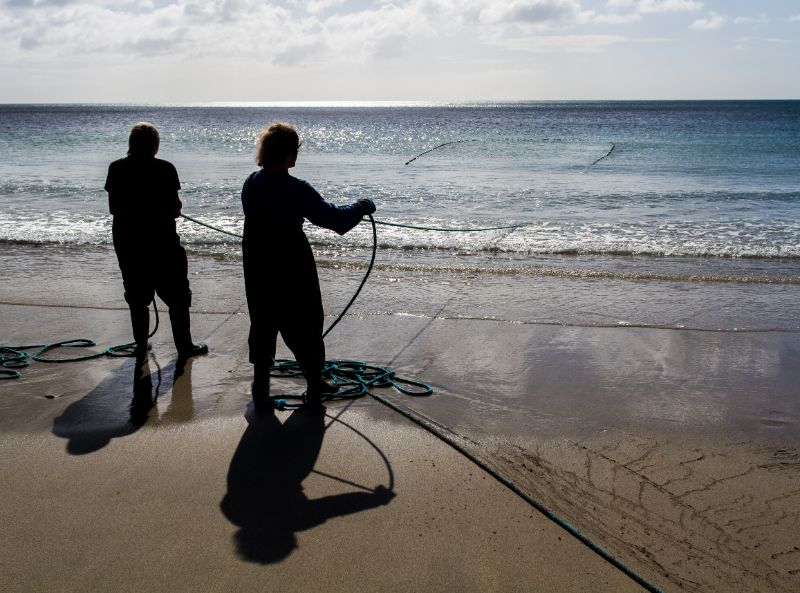Meet our slim and slithery friend, the Sand Eel. Misleadingly named, these sleek creatures are in fact fish, not eels. With their streamlined bodies, they are a marvel of underwater adaptation. But let’s dive deeper into the fascinating world of this tiny ocean dweller.
A Closer Look at the Sand Eel’s Habitat

Persevering in the harsh North Atlantic waters, the Sand Eel has two predominant species. The European Sand Eel or Ammodytes tobianus finds its home along the coastlines stretching from Greenland and Iceland to Spain. The American Sand Eel or Ammodytes americanus prefers the waters along the eastern seaboards of Canada and the United States. Their size, typically around 4 to 6 inches long, makes them perfect for burrowing into sandy shores and seabeds.
Where Do Sand Eels Hide?
These tiny swimmers have an impressive method for avoiding predators: they burrow. Using their streamlined bodies, they dive into the sand, often above the low water mark, and lie in wait for the next tide. But sand isn’t just for hiding; it’s also a fascinating home rich with their favourite prey.
The Sand Eel: Ocean’s Snack

Although not a human delicacy, Sand Eels are tops on the menu for many ocean dwellers. They play an important role as a food source too in the expansive North Atlantic ecosystem.
Who’s After Sand Eels?
- Finback Whales — known for devouring whole schools of Sand Eels.
- Porpoises — aren’t above digging in the sand to nab these delectable fish.
- Various seafaring birds like Auks — not letting their feathered status stop them from enjoying a fishy treat.
Despite their popularity among predators, these miniature marvels have a retaliation strategy, their sharp-nosed anatomy. An unsuspecting fish that swallows a Sand Eel could potentially be hurt as their piercing nasal features can penetrate stomach linings.
Sand Eel’s Unexpected Role

Beyond the attention of predators, Sand Eels find themselves the choice of bait among European fishermen. These fisherfolks claim the use of Sand Eels, especially live ones, offers exceptional success when fishing for hefty saltwater fish like the Striped Sea Bass.
Are Sand Eels Absent in Pacific Waters?
In Pacific waters, there’s a glaring Sand Eel absence. Instead, local anglers there resort to other forms of live bait. Whether it be various types of bait fish like Herring or plentiful Pacific Eels, they emphasize Sand Eel’s coveted role in the world of angling.
The mild Sand Eel, despite its impressive survival skills, often lives as a primary food source for other sea creatures. Yet, its presence feeds the larger ecosystem, contributing to its wonder and diversity. Even we humans value them, harvesting them in vast quantities for products like fertilizer. Truly, the Sand Eel’s fascinating life story is just another reminder of how interconnected our world truly is.
Related Resources